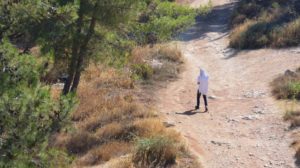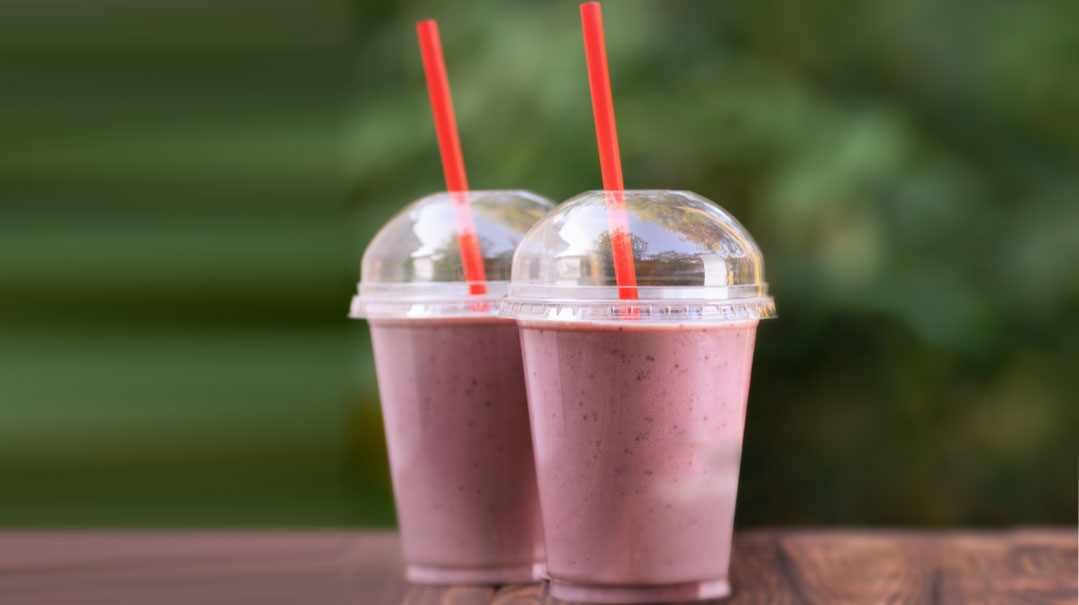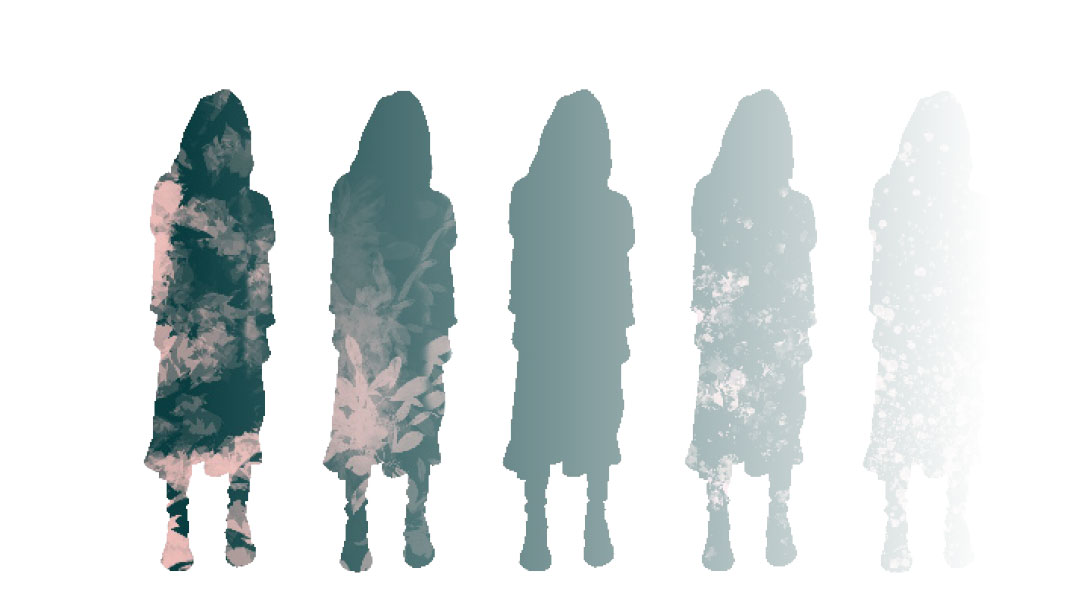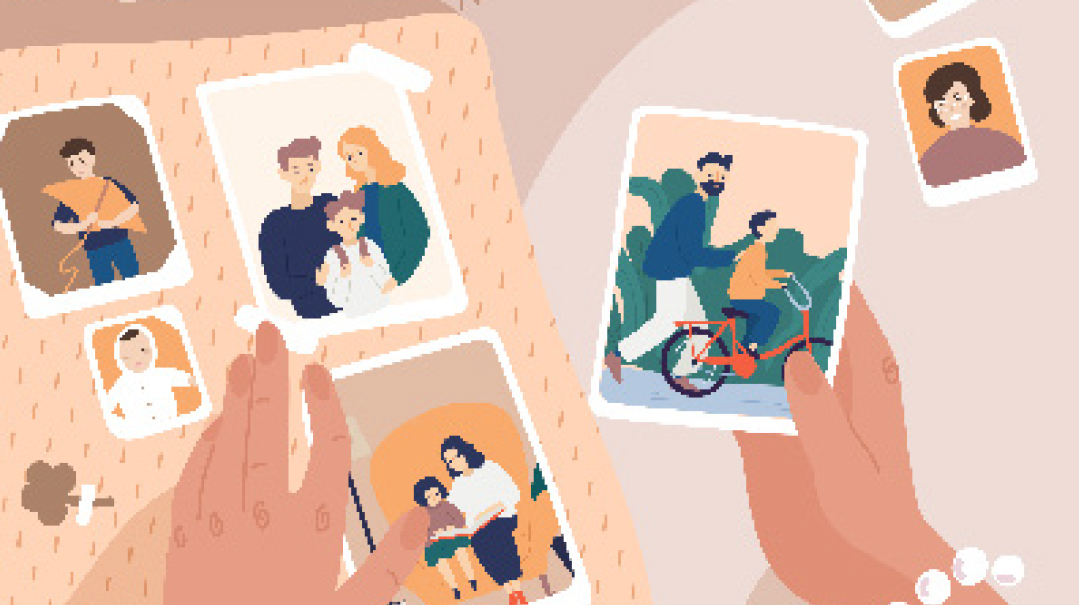Team Twin Swims the Kinneret


Join Team Twin as we slog our way on a chlorinated journey to the 9th Annual Sadna Women’s Swim-a-Thon

T
here are two kinds of swimmers in your typical swimming pool: lappers and yappers.
Lappers are serious swimmers, moving quickly through the lane, stroke by stroke, occasionally glancing at the pool clock to check their speed. Crawl, butterfly, freestyle, they switch strokes often, leaving a slight ripple and admiring onlookers in their wake.
And then there are the yappers. Swim a length, stop to talk to a friend and admire the beautiful weather. Another length, stop to discuss what to cook for Shabbos. Another length, another conversation….
For many years, we twins were counted among the yappers. Current events, recipes, philosophical discussions deeper than the pool’s deep end, conversations about fashions slightly more shallow…. We came for the swimming, but mostly we talked.
Yappers.
Until recently when somehow, against all our expectations, we morphed into lappers. More: We became lappers with a goal — to swim across Eretz Yisrael’s beautiful Kinneret.
In today’s share-everything-you-do-with-the-whole-world atmosphere, no challenge is complete unless you’ve posted your adventures so others can come along for the virtual ride. Writing up our experiences on a blog — a word minted two decades ago, short for “web log” — didn’t fit into our schedules or worldview.
Instead, we coined a new term and a new concept: We’d share our “slog” — a “swimming log” — with our Family First friends, not the whole “blogosphere.” It seemed a particularly appropriate word; Merriam-Webster defines “slog” as a verb meaning to plod (one’s way) perseveringly, especially against difficulty.
So who are we sloggers? Readers know us as two-thirds of the SisterSchmooze column. Our families and friends know us as a pair of identical twin grandmothers who last participated together in a sports event decades ago during camp color war. (It was a three-legged race. We lost.)
Join Team Twin as we slog our way on a chlorinated journey to the 9th Annual Sadna Women’s Swim-a-Thon, a swimming challenge created for frum women to raise money for a special-needs community.
We’ll be swimming in crowded lap lanes as we practice in our local pools, readying ourselves for the stunning aqua waters of the Kinneret. And we’ll be swimming through other things as well. Our self-image. Our doubts. Our self-talk, telling us this isn’t who we are or what we can do.
We’ll be slogging through our fears and our hopes, our failures — and our splashing successes.
Beginnings
The journey starts in the muddy waters of the Latorica, a river flowing through the Carpathian Mountains. Part of its 188 kilometer route took it through the thriving city of Munkacs, where our mother a”h and her family lived before the Shoah.
It was in the Latorica that Mommy first learned to swim. The pious women of Munkacs would find a private spot and bathe in the river. Mommy learned her breast stroke there, and she learned, also, to savor the rhythm of the river’s green-brown waters.
Two decades later, in a new continent and a new life, Mommy and Daddy brought us, their little American children, to the exhilarating waters of the Atlantic Ocean. Emmy Leah took her first tentative toddling steps on the sands of Rockaway Beach; later, we screeched and screamed and reveled in Coney Island’s waves, always on the lookout for the dreaded “undertow” that, according to our parents, might pull us deep out to sea.
Our childhood gifted us with both a genuine love of water and a dim sense of unease at its latent sinister power. We received still another gift years later as the middle-aged daughters of an aging mother. The Beit Zayit pool right outside Yerushalayim was a popular spot for Har Nof ladies during its separate swimming hours. One day our friend Chana announced a great idea.
At the time, read-a-thons and walk-a-thons and all sorts of “thons” were popular ways to raise money for good causes. Well, we were all swimming, and what better cause could there be than a local hachnassas kallah fund? Thus Chana initiated a local “swim-a-thon,” where donors pledged money for each lap that someone swam.
The youngest swimmers were students in the local Har Nof elementary schools. The oldest? Mrs. Rose Stark — Mommy — in her upper eighties and already ailing, who took her hernias and high blood pressure and enlarged heart with her into the water, and, to the delight of everyone around her, swam two arduous and triumphant laps.
The image of our mother making her way through the water stayed with us for a long time. And it accompanied us into our own Kinneret swim-a-thon years later.
Undertows and Other Scary Phenomena
Rational worries about safety: Undertows, currents, sudden cramps while swimming, exhaustion, dehydration, sunburn, veering off course, and finding oneself in the middle of the lake (maximum depth: 43 meters) far from help…
Irrational worries about safety: Sharks (none ever spotted in sweet water lakes); typhoons and tsunamis (they only occur half a world away); whales (hey, we read Moby Dick in college and know how badly it ends).
How to deal with rational worries: Train in the pool to make sure you can go the distance (the short course equals 76 regular pool lengths; it took about a year for us to work up from 20 to 80).
Also important to allay fears: Call the organizers and friends who have done the swim and take their word for it that the swim is safe.
From persistent phone calls, we learned that the event takes place first thing in the morning, when the waters are calmest. Floating rafts are placed every 500 meters (20 pool lengths), and swimmers can stop, rest, drink water, and munch dates for extra energy. Boats constantly circle the perimeter of the course to keep everybody swimming toward the goal, the beautiful beach where the Kinneret meets the Jordan River, about two kilometers away from the starting point. Swimmers are even given whistles to blow if they feel in need of help — which is to be found just seconds away.
How to deal with irrational worries: Remember that the main point of the swim is to raise funds for a good cause, making each swimmer a kind of shaliach mitzvah.
Fight the urge to tell your children where you’ve left your will and to write your husband a goodbye message. And don’t reread Moby Dick (probably good advice in general, unless you’re really into whales).
Ignore the naysayers, like the strong swimmer in the pool’s fast lane who told Emmy Leah, when she heard she would be crossing the Kinneret: “Maybe you should practice treading water for long intervals….”
And, perhaps most important and most difficult of all: Ignore your own nay-saying voice, the one that keeps so many dreams from being fulfilled.
One Lap at a Time
The adventure began, as so many wonderful things do, with friends. Lapper or yapper, when it comes to the locker room, everyone’s a schmoozer. Over many years and many conversations, we occasionally heard the words “Swim4Sadna swim-a-thon.” It was a women’s group swim in the Kinneret. One woman told us about reaching the finish: “It was the happiest moment of my life.” Another told us she couldn’t participate during her year of aveilus, since it gave her such joy.
With the advice and coaching of another friend, we had already taken the first steps (strokes?) toward serious lap swimming. But though intrigued, we were still swimming only 10 or 20 lengths without stopping; crossing the Kinneret, like climbing Everest or exploring the moon, was simply impossible.
Or was it?
Here’s the great thing about training. It works. Yet another friend told us her secret: “Swim twice a week. Don’t miss. And every time you swim, add two lengths.”
Consistency, commitment, and growth. Just two more lengths every time. Small and doable, with progress that’s measurable. The secret of success in almost anything.
Twenty lengths became 32; 32 turned into 40. Before our birthday, we decided to go for “60 at 60” — 60 lengths for 60 years. A birthday present to ourselves.
We weren’t swimming fast, and we weren’t moving fast. But we were moving. And we were beginning to wonder — could we possibly swim the Kinneret?
Why Do It?
In a New York Times interview in 1923, mountain climber George Mallory was asked why, after two unsuccessful attempts, he was still trying to climb to the summit of Mount Everest.
“Because it’s there,” he famously replied.
Because it’s there? For two nonathletic grandmothers to take on the challenge of crossing the Kinneret — sorry, but that answer wasn’t good enough.
So why do it? For the love of swimming? Maybe, but pools are a lot more convenient and accessible, and you don’t have to walk on sharp rocks or sink into mud to get in.
For the love of the Kinneret? Yes, the Kinneret is a glittering jewel, its sparkling blue set off by the beige-and-brown colored mountains surrounding it, but we could have appreciated its beauty from a safe shore, just dipping our toes in the refreshing waters.
So why do it?
For the fun of it. For the challenge of it. To motivate us to swim more regularly. But there was more.
It’s All about Dreams
When we began researching the swim-a-thon, we read about Sadna, checked out their website, talked to a few parents. We discovered that it’s a community for kids and young adults with special needs, those with Down syndrome or cognitive or behavioral challenges.
Their annual fund-raising swim-a-thon, we were told, reflects their educational philosophy. It isn’t about competing, it’s not about coming in first, it’s about taking each person’s individual potential and developing it to the utmost.
Nice words. But on our short trip to Sadna to get a better sense of why we were doing this, those words came to life.
People with disabilities are too often invisible in our society, and seeing people with cognitive disabilities took a little getting used to. Until we started talking to them.
We first met E., a young man who showed us pieces of wood he was carving. He spoke in fast though slurred Hebrew, and we didn’t fully understand what he was trying to create with his two pieces of wood, but we heard the pride in his voice as he described how he’d carved them.
Our guide explained that the carpentry center encourages the residents not only to learn to work with wood, but to go to the forests to find branches with which to begin their project. This encourages them to face a job from start to finish, to plan and create and execute, and never to find excuses not to complete a task.
We spoke to A., a young man who works in the bakery, preparing loaves of sourdough bread for the community’s daily needs and cookies and pitas for their tiny caf?, open to the public every Friday. To our surprise, though his speech was a little hesitant, he spoke perfect English as well as Hebrew. His parents, like us, were olim from America. He, too, spoke with pride about his baking — and about how he was paid by the Sadna for his work.
Our guide told us about a young man with severe behavioral issues who learned to take care of horses in the Sadna’s animal therapy program. He ended up going to the Academic College at Wingate, Israel’s premier school for sport training, and now is in charge of a large horse-therapy program.
It’s not all happily-ever-after stories, of course. Sometimes progress is measured in tiny steps. Like the young man who worked in the animal center. Unaware of his own muscular strength, he accidentally hurt or killed some of the small animals. Rather than give up completely, the Sadna staff gave him animals made of clay, only returning him to working with the living, furry kind when he’d honed his fine-motor skills enough to handle them gently.
Funds raised by this year’s swim-a-thon — almost NIS 860,000, gathered by 347 swimmers, donated by nearly 3,000 sponsors (including Team Twin’s own 37 wonderful and generous sponsors, who together donated an incredible NIS 21,000!) — will pay for an enhanced sports center.
The life expectancy of these young people is often low, and exercise and activity increases it significantly. Our guide described “movement” as part of the “DNA” of Sadna. They encourage activity in subtle ways: There are no chairs in the working areas, and the various offices and activity rooms, which could have been put in one central place, are purposely spread out throughout the campus.
When a child comes to Sadna, a “Dream Team” is set up, including parents, counselors, staff members, and the child himself, where appropriate. After getting to know the child, his strengths and his limits, the team creates a dream, the large goal, and then works to formulate small, even tiny, goals that will help bring his dream to life.
In some ways, our swim across the Kinneret parallels that concept. While baruch Hashem we aren’t physically disabled (like, for example, the blind girl, a student at Sadna, who crossed the Kinneret with us), physical prowess and endurance were never part of our self-image. We made swimming the lake our dream, and then formulated small, even tiny goals: Emmy Leah had to work on her crawl, since the backstroke is uncomfortable on the lake because of the sun in one’s eyes; Miriam had to increase her breathing capacity to stay underwater a moment longer. Day after day, week after week, we had to add another length and another and then another, in order to achieve our dream….
Climbing the highest mountain in the world — or swimming the Kinneret, the world’s lowest freshwater lake — “because it is there” wasn’t our dream. But there are Jewish children for whom everyday activities are as challenging as conquering Everest. And if we have helped them a little by swimming the Kinneret, for us that’s a dream come true.
The Blue Jewel of Eretz Yisrael
Anyone who has lived in or even visited Israel knows how central the Kinneret is in modern Israeli consciousness. A drop of rain falls in Yerushalayim, in Be’er Sheva, or the Golan, and everybody asks: Did the Kinneret go up? Israel is researching other sources of water — desalination, reclaiming floodwaters, locating and using groundwater, encouraging conservation — but Israelis continue to look north and worry about the Kinneret.
The Jewish connection to the lake goes deeper than the practical problem of finding water in an arid region. The midrash tells us that Be’er Miriam, Miriam’s Well, which gave water to the Jews for all their years in the desert, was miraculously transplanted to the middle of Yam Kinneret. The Arizal located it; a 16th century sefer tells the story of the Arizal taking his student, Rav Chaim Vital, to drink from it. From that moment, Rav Chaim began to understand depths of Torah previously closed to him.
Our friend Chana, who initiated the local swim-a-thon that our mother swam, has crossed the Kinneret many times, both by herself and with the Sadna swim-a-thon. She told us that once, swimming on her own, the waters suddenly changed temperature, and she had the strong impression that she was swimming over the waters of Miriam’s Well. She consulted with rabbanim afterward, who confirmed that she had swum in the area believed to be identified by the Arizal.
As we held our breaths and swam under the water, did a drop of water from Miriam’s Well pass through our closed lips? Were we zocheh to taste of the waters that quenched the thirst of the generation that learned Torah from Moshe Rabbeinu himself?
Maybe. Maybe not. But certainly, as we swam the Kinneret, we weren’t so much thinking about how much the Kinneret would go up this year, as how high these beautiful waters could raise us.
On the Beach
And now, finally, it’s time.
We place items we’ll need at the finish line — wallets, phones, eyeglasses — into string bags emblazoned with the swim-a-thon logo, mark our numbers on them (Miriam, 331; Emmy Leah, 332) so we can identify them after the swim.
We tie whistles to the straps of our bathing suits, and sternly tell the butterflies in our stomachs to settle down.
We sip tea on the beach and bask in the atmosphere of camaraderie, as old friends and new wish each other luck.
We stare at the Kinneret, its waters grayish-green in the early morning sunlight, and wonder what it will be like to cross it.
And then we join hundreds of women wading into the water.
In front of us, a young woman stands on a float. She bellows out final safety instructions, points to the gigantic buoys that mark the route, and then shouts out some unexpected, familiar, and comforting words.
She’s saying Tefillas Haderech.
Hundreds of women about to set out on this journey, each facing her own hopes and fears, shout out together: Amen!
Amazingly, our fears dissipate, vanish like mist on the sea.
Crossing the Lake
With a few hundred women coming in at the same time, the sea is crowded at the start. After a few minutes and a few strokes, though, the women fan out, the stronger swimmers glide forward, and it’s just the two of us.
The swim-a-thon organizers had suggested a buddy system and, of course, as Team Twin we had our buddies built in. Though we do tend to swim in perfect synchronization, Miriam, the older sister (by two minutes!) moves faster through the water. We considered swimming separately, but decided to stay together.
Now, every few minutes, Miriam slows down to let Emmy Leah catch up, and every few strokes, we both stop to make sure the other one is still on course. It slows us down, but that doesn’t matter. Another Miriam in another time — Miriam Haneviah, whose well lies somewhere nearby — watched over her brother in the water; we, too, watch over each other.
The water is murky but its temperature is perfect, cold enough to be bracing, warm enough to be comfortable. We swim past the blind girl gently being helped by her swimming buddy. We’d seen a few young women using walkers and wheelchairs on the beach, but here in the water everyone is moving forward beautifully and we can’t identify who they were.
One of our wonderful donors had sent us an encouraging message with her donation, ending it with a joke: Please try not to speak to one another while swimming. Well, the joke is on her: It would take more than a lake to quiet down the SisterSchmoozers.
At each of the floats upon which we stop for a rest, and in between while we use the side stroke, our conversation continues. “Are you okay?” “Great. You?” “Fine.” “Wanna go faster?” “Let’s do back stroke.” “Don’t you wish Marcia was here, too? Then we could really swim and schmooze!” “Isn’t this incredible?” ”Hey, we’re almost there!”
The first float is unexpectedly close; we’re not even breathing hard. We stop at the second, grab a drink of water, and exchange excited glances: halfway through! At the third float we eat a couple of dates, appreciating the burst of energy they give us for the last laps.
Now we can see the beach, we can make out the thunderous sound of someone announcing on the sound system the name of each swimmer as she reaches dry land. We realize: It’s almost over. We slow down even more, relishing every moment. We float on our backs, gazing at the gorgeous panorama of the Golan’s mountains, and whisper Dovid Hamelech’s immortal words: “I lift my eyes to the mountains; from where will my help come?”
Suddenly we feel something beneath our feet: the mud and rocks of the Kinneret shore. Oddly enough, the hardest part takes place on dry land, as we scramble and slip to the beach. It’s an appropriate way to end, though, with the women all helping each other, offering arms and advice.
A fantastic beachside breakfast, a group shot, and it’s over: the Sadna Swim-a-Thon 2018.
Team Twin has crossed the Kinneret, and won its very first medal.
And it feels great.
(Originally featured in Family First, Issue 596)
Oops! We could not locate your form.












